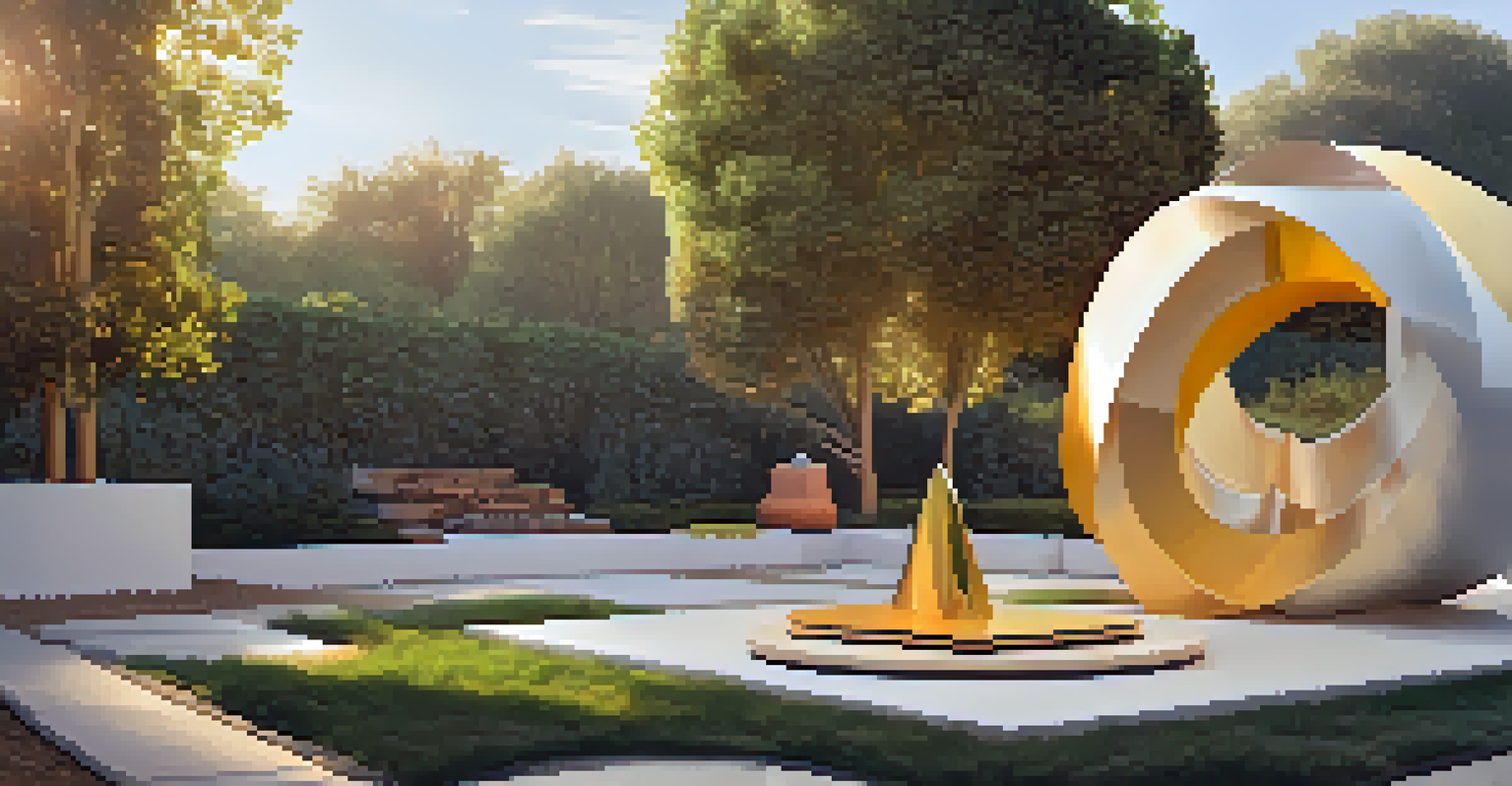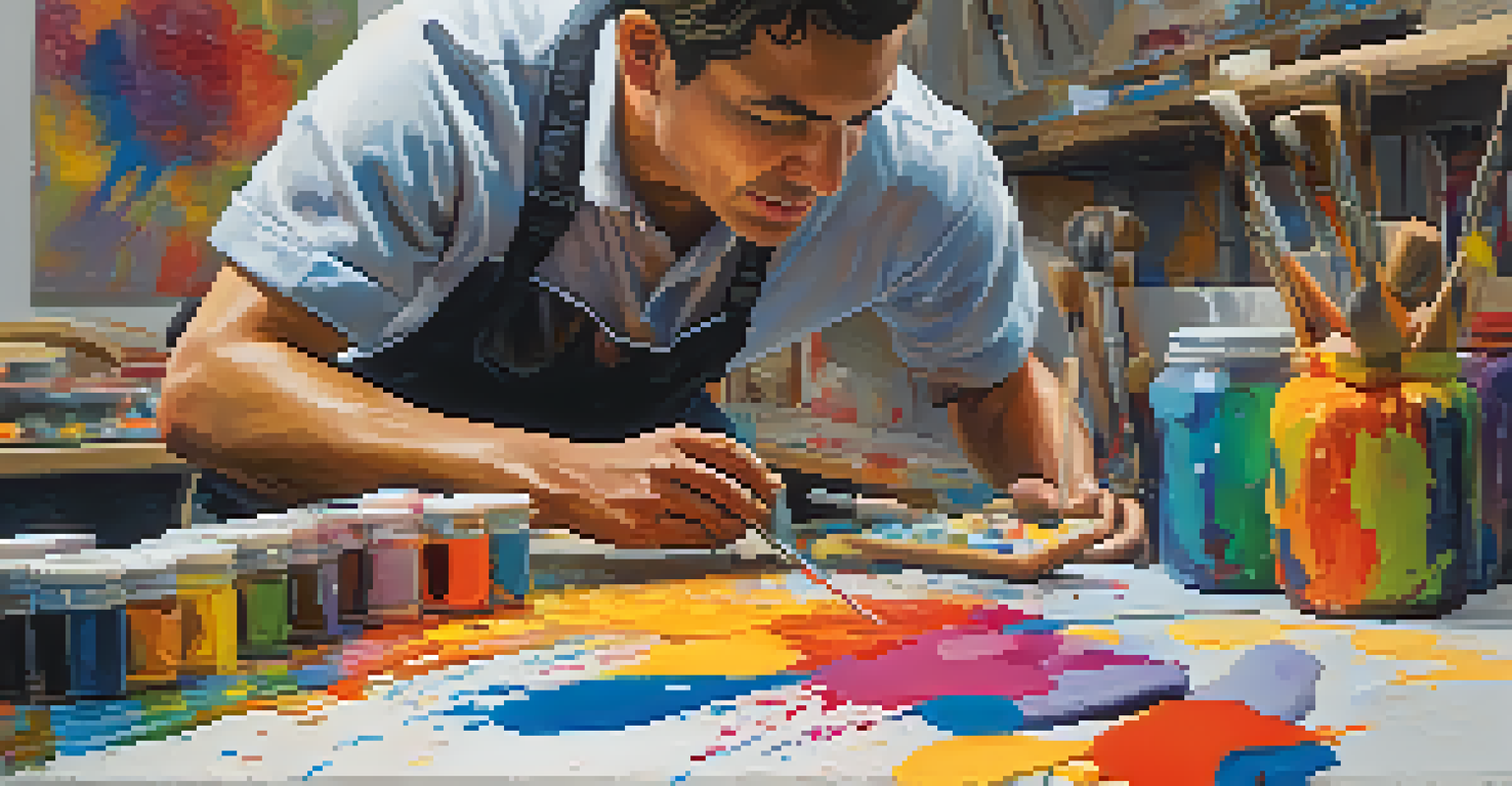Artistic Partnerships: Painters Collaborating with Sculptors

The Evolution of Artistic Partnerships in History
Artistic collaborations have a rich history, dating back to the Renaissance when painters and sculptors often worked side by side. This partnership allowed for a blend of techniques, as each artist brought their unique skills to the table. For example, Michelangelo's work on the Sistine Chapel involved both painting and sculpture, showcasing how these forms can complement each other beautifully.
Great things are not done by impulse, but by a series of small things brought together.
Over time, these collaborations have evolved, with modern artists pushing boundaries in innovative ways. Today, we see painters and sculptors joining forces to create immersive installations that challenge traditional art forms. This evolution highlights the importance of collaboration in art, where the sum is often greater than its parts.
These historical examples remind us that artistic partnerships are not just a trend but a vital aspect of creative expression. As artists continue to collaborate, they breathe new life into their work, making art richer and more diverse.
The Benefits of Collaboration for Artists
Collaborating with another artist can be incredibly beneficial. For painters working with sculptors, it opens up new avenues for creativity and experimentation. Imagine a painter who usually works on flat canvases suddenly exploring three-dimensional forms; the possibilities are endless!

Working with another artist can also provide a fresh perspective. When painters and sculptors share ideas, they often inspire each other to push their artistic boundaries. This exchange of ideas can lead to innovative techniques that neither artist might have discovered alone.
Artistic Collaboration Enriches Creativity
Collaborating allows artists to blend techniques and explore new ideas, enhancing their individual and collective work.
Moreover, collaboration can enhance visibility for both artists. By pooling resources and audiences, they can reach a wider audience, showcasing their work in more engaging and interactive ways. Together, they create a synergy that can elevate their individual practices.
Famous Artistic Partnerships to Note
Throughout art history, there have been some compelling partnerships worth mentioning. One notable example is the collaboration between Pablo Picasso and Alberto Giacometti. Their unique styles blended beautifully, resulting in dynamic works that combined painting and sculpture in innovative ways.
The best way to predict the future is to create it.
Another example is the collaboration between contemporary artists like Anish Kapoor and painter Yves Klein. Their work together explored color and form, creating pieces that challenged viewers' perceptions of space and structure. This partnership highlights how different mediums can interact to create something entirely new.
These famous collaborations not only showcase the potential of artistic partnerships but also inspire emerging artists to explore their own collaborative opportunities. They remind us that creativity thrives in community and shared vision.
How Painters and Sculptors Influence Each Other
When painters and sculptors collaborate, they often influence each other’s techniques and styles. For instance, a painter might introduce a sculptor to new color palettes or brush techniques that can enhance their three-dimensional work. This cross-pollination of ideas can lead to unique results that neither artist could achieve on their own.
Conversely, a sculptor’s understanding of form and volume can inspire a painter to think differently about composition and perspective. This interplay encourages artists to step outside their comfort zones and explore new dimensions of their craft. The result is often a rich tapestry of artistic innovation.
Famous Partnerships Inspire Innovation
Notable collaborations throughout history demonstrate how artists can push boundaries and inspire each other to create groundbreaking pieces.
Ultimately, these influences create a dialogue between the two forms, allowing for deeper exploration and experimentation. This exchange not only elevates the individual works but also enriches the broader art community.
Challenges Faced in Artistic Collaborations
While collaboration can be rewarding, it also comes with its challenges. Different artistic visions can sometimes lead to conflicts, especially if one artist feels their ideas are not being represented. Navigating these differences requires open communication and mutual respect, which are crucial for a successful partnership.
Additionally, logistical issues, such as coordinating schedules and sharing resources, can complicate collaborations. Artists often have their own unique processes and timelines, which may not always align. Finding a balance between artistic freedom and collaboration can be tricky.
Despite these challenges, many artists find the rewards of collaboration outweigh the difficulties. By addressing conflicts head-on and maintaining a spirit of cooperation, artists can create exceptional works that reflect their combined talents.
Exploring New Mediums Together
One exciting aspect of painter-sculptor collaborations is the opportunity to explore new mediums. For example, a painter might experiment with mixed media by incorporating sculptural elements into their work, blurring the lines between the two forms. This exploration can lead to groundbreaking pieces that redefine artistic boundaries.
Sculptors, too, can benefit from this collaboration by incorporating painting techniques into their work. Imagine a sculpture that not only captures form but also vibrantly plays with color and texture, creating a multi-sensory experience. This kind of innovation expands the possibilities of both painting and sculpture.
Future of Art Embraces Technology
As technology advances, artists are finding new ways to collaborate and create interactive experiences that redefine artistic expression.
The willingness to step outside of traditional boundaries not only enriches the artists’ portfolios but also invites viewers to engage with art in new and exciting ways. This exploration is a testament to the power of collaboration in pushing the art world forward.
The Future of Artistic Partnerships
As the art world continues to evolve, the future of artistic partnerships looks promising. With the rise of technology and digital art, painters and sculptors have more tools than ever to collaborate. Virtual reality, augmented reality, and interactive installations are just a few examples of how artists are merging their practices.
Moreover, the increasing emphasis on community and shared experiences in art encourages collaboration across diverse disciplines. Artists from different backgrounds and styles are coming together to create work that is more inclusive and reflective of our shared experiences. This trend is not just about merging techniques but about building lasting relationships.

Ultimately, the future of artistic partnerships holds endless possibilities. As artists continue to break down barriers and explore new mediums together, they will undoubtedly create innovative works that inspire future generations.